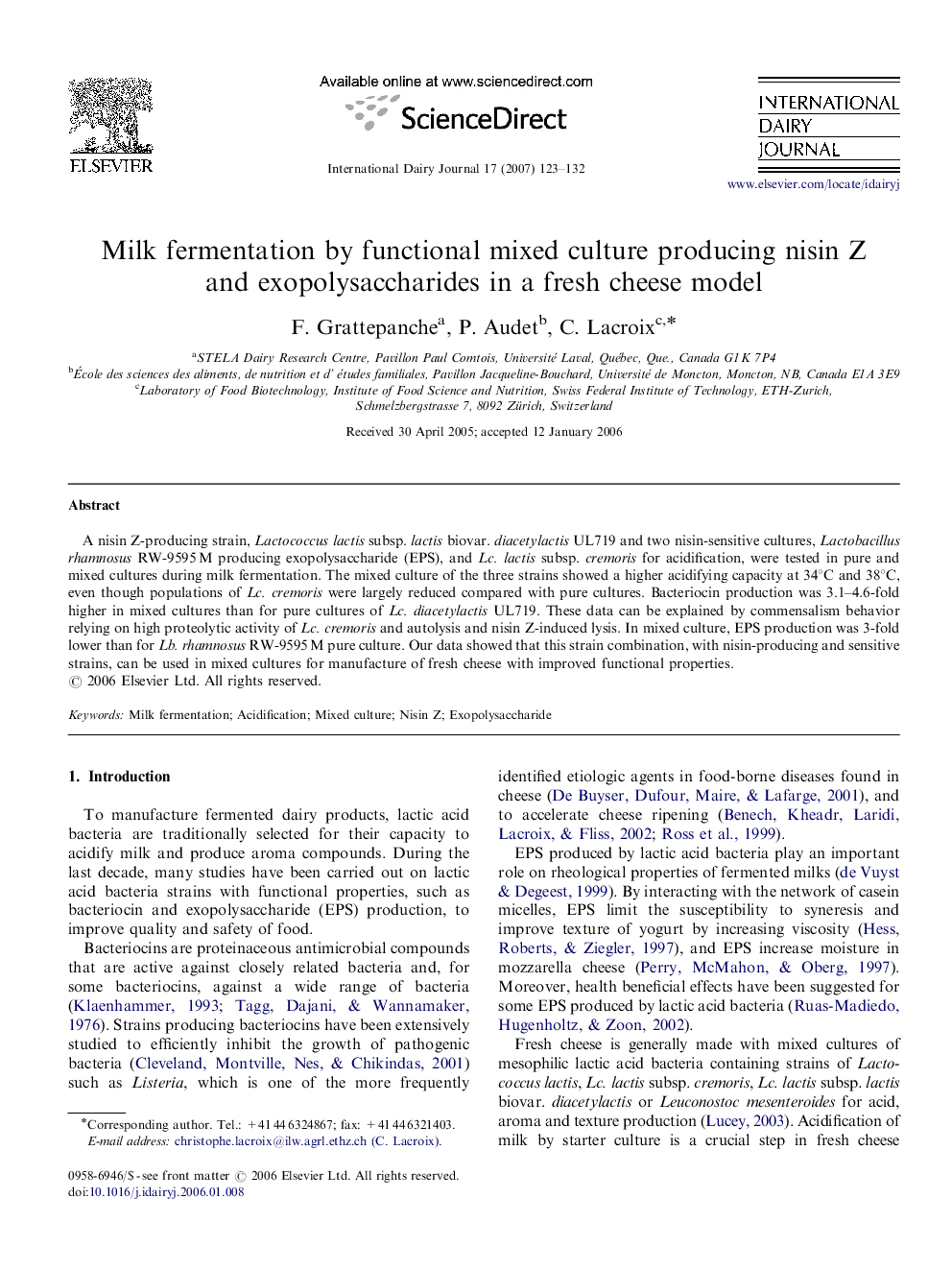| Article ID | Journal | Published Year | Pages | File Type |
|---|---|---|---|---|
| 2435864 | International Dairy Journal | 2007 | 10 Pages |
A nisin Z-producing strain, Lactococcus lactis subsp. lactis biovar. diacetylactis UL719 and two nisin-sensitive cultures, Lactobacillus rhamnosus RW-9595 M producing exopolysaccharide (EPS), and Lc. lactis subsp. cremoris for acidification, were tested in pure and mixed cultures during milk fermentation. The mixed culture of the three strains showed a higher acidifying capacity at 34°C and 38°C, even though populations of Lc. cremoris were largely reduced compared with pure cultures. Bacteriocin production was 3.1–4.6-fold higher in mixed cultures than for pure cultures of Lc. diacetylactis UL719. These data can be explained by commensalism behavior relying on high proteolytic activity of Lc. cremoris and autolysis and nisin Z-induced lysis. In mixed culture, EPS production was 3-fold lower than for Lb. rhamnosus RW-9595 M pure culture. Our data showed that this strain combination, with nisin-producing and sensitive strains, can be used in mixed cultures for manufacture of fresh cheese with improved functional properties.
